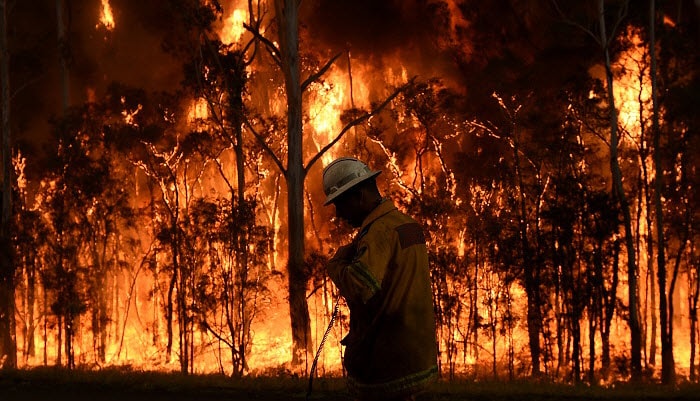Ensuring Bush Fire Protection Through Appropriate BAL Record Evaluation
In the world of bush fire security, the careful evaluation of Bushfire Strike Degree (BAL) reports stands as a keystone for protecting homes versus the terrible influence of wildfires. With environmental elements and building qualities playing substantial roles in establishing the degree of danger, a detailed understanding of BAL rankings becomes necessary.
Recognizing Bushfire Attack Level (BAL)
In the realm of bushfire defense, comprehending the Bushfire Attack Degree (BAL) is critical for ensuring efficient reduction methods. BAL is a system made use of to determine the prospective threat a building might face from a bushfire. It considers aspects such as the kind of plants, the slope of the land, the Fire Risk Index, and the Fire Severity Index. Recognizing the BAL rating of a property is vital for home policymakers, contractors, and proprietors to apply appropriate procedures to secure versus bushfire dangers.

Value of BAL Record Analysis
A necessary facet in bushfire defense preparation includes the detailed evaluation of BAL records to examine the prospective risks and identify appropriate mitigation approaches. BAL reports supply important info regarding the potential impact of bushfires on a residential or commercial property based on numerous aspects such as plants type, range to prospective fire risks, and slope of the land. Assessing these records with precision is critical in developing reliable bushfire security steps customized to the particular risk account of a property.
Applying Fire Security Measures
Implementing reliable fire security measures is critical for securing residential properties in bushfire-prone areas. Among the primary means to enhance fire defense is by producing defensible room around buildings. This entails clearing up flammable plant life, such as dry fallen leaves and branches, within a certain distance of the property. In addition, installing fireproof roof covering materials can help minimize the risk of ashes igniting the roofing throughout a bushfire. Correctly kept displays and gutters are also necessary to prevent debris accumulation that can fuel a fire.
Additionally, having a well-kept and adequate water supply, such as a storage tank or pool, can aid firemans in their initiatives to secure the residential or commercial property. BAL Report. Overall, implementing a mix of these fire protection actions can substantially increase the opportunities of protecting residential or commercial properties throughout bushfire events.
Mitigating Dangers in Fire-Prone Areas
To fortify properties against bushfire hazards, a strategic focus on mitigating threats in fire-prone areas is essential. Mitigating dangers in fire-prone locations involves a thorough method that incorporates numerous actions to minimize the possibility and influence of bushfires. One essential element of threat mitigation is preserving defensible room around homes by getting rid of combustible greenery, making sure adequate spacing between frameworks and trees, and using fire-resistant landscape design practices. Furthermore, applying ember-proofing measures such as installing metal mesh screens on windows and covering roofing dental caries can aid prevent cinder attacks and lessen the risk of area fires.
Moreover, building or retrofitting buildings with fireproof materials and making sure proper maintenance of roofs, seamless gutters, and exterior cladding can dramatically boost the residential or commercial property's resilience to bushfires. Creating and exercising a bushfire emergency situation plan with all passengers, consisting of emptying procedures and interaction techniques, is also essential in mitigating dangers efficiently. By embracing a proactive technique to run the risk of reduction in fire-prone locations, home proprietors can much better shield their possessions and enhance total bushfire preparedness.
Ensuring Home Safety and Strength
Making sure the safety and durability of buildings in fire-prone areas calls for a steadfast dedication to robust precautionary measures and calculated planning. Residential property safety starts with implementing efficient actions to decrease go now fire dangers. This consists of maintaining a defensible area around the property by removing combustible greenery, making certain proper maintenance of roofings and seamless gutters, and making use of fire-resistant building materials. Routine upkeep of firefighting tools, such as hose pipes and lawn sprinkler, is additionally crucial to home strength.
Resilience, on the various other hand, entails weblink the capability of a home to endure and recover from a bushfire. By proactively resolving these elements, property proprietors can much better protect their possessions and loved ones from the danger of bushfires.
Conclusion
In verdict, guaranteeing bushfire defense through correct BAL report evaluation is essential for understanding the degree of threat positioned by bushfires and applying necessary fire security actions. By reducing threats in fire-prone locations and guaranteeing building safety and durability, individuals and neighborhoods can better get ready for and react to bushfire occasions. It is imperative to prioritize fire security actions to protect lives and residential property in these risky environments.
In the realm of bush fire security, the thorough evaluation of Bushfire Attack Level (BAL) reports stands as a foundation for guarding homes against the damaging influence of wildfires (BAL Report). Understanding the BAL rating of a residential property is critical for residential or commercial property proprietors, policymakers, and builders to apply suitable measures this contact form to protect against bushfire dangers

BAL reports offer vital details about the prospective influence of bushfires on a residential or commercial property based on different aspects such as greenery kind, range to possible fire hazards, and slope of the land (BAL Report). In general, carrying out a mix of these fire defense actions can significantly enhance the chances of protecting residential properties throughout bushfire events